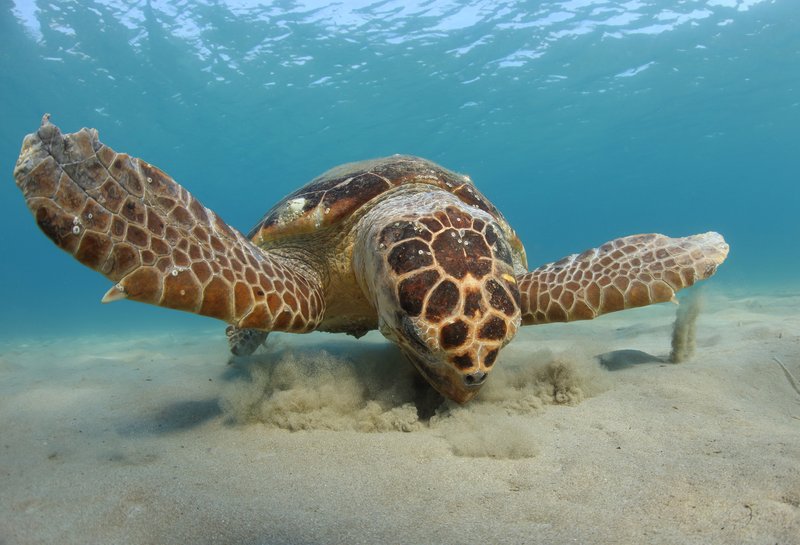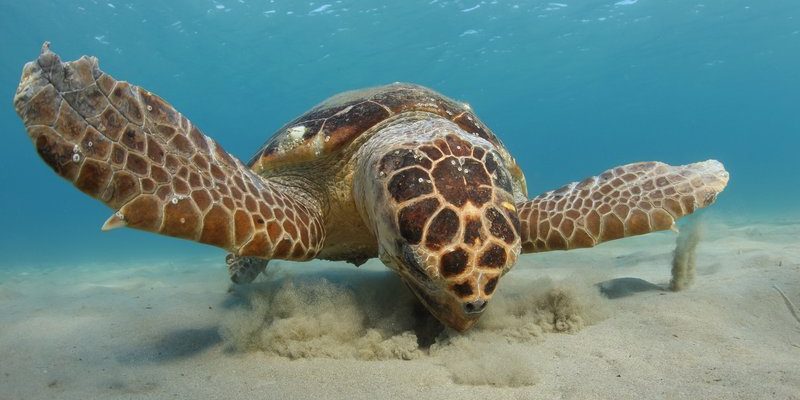
Just like engaging with any wild animal, there are guidelines and safety measures to consider when interacting with loggerhead turtles. These turtles are not only beautiful; they play a crucial role in our marine ecosystem. However, human activities can sometimes put them at risk. It’s important to understand how to respect their space while also appreciating their existence. So, pull up a chair, grab your coffee, and let’s dive into the world of loggerhead turtles and how we can interact with them safely.
Understanding Loggerhead Turtles
Loggerhead turtles are easily recognizable due to their large, heart-shaped shells and distinctive, powerful jaws. They can weigh anywhere between 200 to 400 pounds and can grow up to 3 to 4 feet long. Picture a small car cruising through the water—that’s about the size you’re looking at with a loggerhead! These turtles are primarily found in temperate and tropical oceans around the world.
What makes loggerheads fascinating is their migratory behavior. They can travel thousands of miles between feeding and nesting grounds. Typically, they feed on jellyfish, conchs, and a variety of crustaceans, which makes them a vital part of maintaining the health of our ocean ecosystem. Their life cycle, from hatchling to adult, is incredibly engaging and showcases the resilience of wildlife in the face of challenges.
When we think about connecting with loggerhead turtles, it’s essential to appreciate their role in the ocean. Not only are they beautiful, but they are also part of a larger story about marine health and conservation. By understanding these creatures better, we can learn how to interact with them safely and respectfully.
Safe Distance: The Key to Interaction
When considering how to interact with loggerhead turtles, the most crucial rule is to maintain a safe distance. Imagine you’re at a party; you wouldn’t want someone invading your personal space, right? Loggerhead turtles, while generally docile, can become stressed if humans get too close.
The ideal distance for observing loggerheads is about 10 to 15 feet away. This distance allows you to appreciate their beauty without causing them distress. Using binoculars or a camera with zoom can help you capture those stunning moments while respecting their space. If you’re lucky enough to see a loggerhead while snorkeling or diving, keep your hands to yourself.
Here’s the thing: Not only does maintaining a safe distance protect the turtles, but it also ensures your safety. Loggerheads can be quite strong, and sudden movements or interactions might provoke unexpected reactions. So, let them swim in peace, and you’ll enjoy a much more rewarding experience.
Responsible Wildlife Tours
If you’re eager to see loggerhead turtles up close, consider joining a responsible wildlife tour. These tours are usually led by experienced guides who follow strict guidelines to ensure both human and turtle safety. Often, these tours emphasize education about the loggerhead and the marine environment they inhabit.
During a wildlife tour, you might learn about their behaviors, nesting habits, and the challenges they face due to climate change and pollution. These insights make your experience even richer and foster a deeper connection with nature. A reputable tour operator will also have protocols in place to minimize disturbance to the turtles and their habitat.
Before booking, research the company. Look for reviews and check if they follow eco-friendly practices. When you engage in responsible wildlife tourism, you’re not just having fun; you’re also contributing to the protection of these majestic creatures and their environment.
The Importance of Conservation
Loggerhead turtles are classified as vulnerable, which means they face threats from various sources like habitat loss, climate change, and marine pollution. If you’re passionate about interacting with these turtles, supporting conservation efforts is essential.
There are many ways you can contribute to their preservation. Volunteering with local organizations that focus on turtle rescue and rehabilitation is a fantastic way to get involved. These groups often need help with beach cleanups, educational outreach, and even monitoring nesting sites. By lending a hand, you’re not just observing; you’re actively participating in the effort to protect loggerhead turtles.
Additionally, choosing sustainable seafood and reducing your plastic usage can help minimize the impact on marine life. Every small action counts, and when combined with collective efforts, they create significant change. You might be surprised by how much of an impact you can make!
Interacting in Captivity: Ethical Considerations
Sometimes, people wonder about the ethics of interacting with loggerhead turtles in captivity, such as at aquariums or marine parks. While these facilities can provide valuable education about marine wildlife, it’s crucial to consider the welfare of the animals.
Marine parks often house loggerheads for rehabilitation purposes or educational programs. In these environments, the turtles might receive medical care and proper diets. However, it’s essential to ensure that the facility adheres to high standards of animal care and ethics. Look for places that are accredited and prioritize the turtles’ health and well-being over entertainment value.
When visiting such facilities, respect the guidelines. Don’t tap on the glass or try to feed the turtles—this can stress them out. Instead, enjoy learning about their behaviors and the conservation efforts in place to protect them in the wild.
What to Do If You Encounter a Loggerhead Turtle
If you happen to encounter a loggerhead turtle in the wild, consider yourself lucky! Here’s what you should do to ensure a safe interaction for both you and the turtle:
- Remain Calm: If you see a loggerhead in the water, try not to splash or make sudden movements.
- Observe from a Distance: Keep that safe distance of 10-15 feet. You don’t want to disturb their natural behavior.
- Don’t Touch: Resist the urge to pet or grab the turtle, as this can cause stress or injury.
- Report Unusual Behavior: If you notice a loggerhead that seems to be in distress or injured, contact local wildlife authorities.
Remember, these turtles are wild animals. Your goal should be to observe and appreciate them without intruding upon their world.
Interacting safely with loggerhead turtles is all about respect and responsibility. These incredible creatures deserve our admiration, not our interference. By maintaining a safe distance, participating in responsible tours, and supporting conservation efforts, we can enjoy the beauty of loggerheads while helping protect them for future generations.
As we dive deeper into the world of loggerhead turtles, let’s embrace our role as stewards of the ocean. Together, we can ensure these magnificent beings continue to thrive in their natural habitat, reminding us of the wonder of nature and the importance of preserving it. So whether you’re watching them from the shore or supporting a conservation project, remember: every little bit helps, and every interaction matters.

